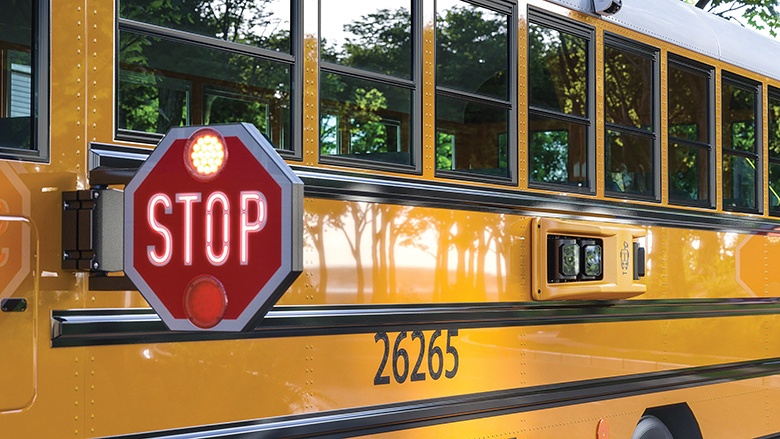
Three Technologies Making School Buses Safer
The yellow school bus is one of the more technologically advanced and safest vehicles on the road. Still, in a report on parents’ sentiment around school transportation, 75 perent of parents want a better way of tracking their students during the ride.
There is a heightened national focus on ensuring a safer school experience for students in the wake of the tragedy at Robb Elementary in Uvalde, Texas. As school campuses are hardened for security, the school bus, which is often referred to as an extension of the classroom, becomes a vulnerable target. Furthermore, school bus safety will face increased scrutiny under the provisions of the reintroduced School Bus Safety Act 2021 by the House of Representatives.
What’s the answer? The following are three real-time technologies that provide peace of mind to parents, administrators, and operators, while putting riders at ease.
GPS and RFID Provide More Than Just Directions
Fifty-one percent of parents report wanting access to real-time school bus information in the event of an emergency, and 50 percent want timely communication about transportation schedules and drop-off/pick-up details. In response, school districts are adopting innovative fleet technology solutions to give parents visibility into bus route progress. In today’s world, where a parent can track their pizza delivery or the ETA of a rideshare driver, they expect the same capability to track the exact location of buses en-route or whether their student is on a bus by simply using their smartphone.
Much like public transportation, this can be easily accomplished by having students swipe a passive RFID card with each entry and exit from the bus. Information including time, date, and location of each scan, is logged and processed for a real-time record of student location.
In case of an emergency or security threat, first responders and administrators will know who is on the bus and can assess the situation in real-time. For non-emergency situations, school administrators and parents are able to know who has come into contact with a student testing positive for COVID from riding together on the bus.
Route Optimization for Fiscal Responsibility
GPS capabilities are simultaneously used to maximize bus routes, minimizing riders’ time on board, and mitigating concerns over delays. Route optimization technologies easily manage bus routes with live, direct data reassuring drivers and parents alike.
Dashboard technologies promise reliable and efficient operations through scheduling, dispatch, and time and attendance functions that automatically update clock-ins, yard and school departures, and arrivals. Parents can check if they missed their student’s bus pickup, monitor how close the bus is, and follow the progress of their student’s location in real time. Above all, less time spent on the bus is less time for parents to spend worrying.
As a bonus, route optimization technologies alert dispatchers and yard teams to the right times to conduct maintenance, rather than just sticking to rigid, predetermined maintenance schedules. Streamlining the efficiency of the maintenance process prevents minor issues from becoming more major ones, keeps buses up and running, and prevents unplanned interruptions to route scheduling due to mechanical failures or breakdowns.
Stop-Arm Camera Compliance
It is not uncommon to see a harried or angry driver ignore the law and drive around a school bus, even when the bus stop arm is extended. Bus drivers, concerned parents, citizens, or students themselves will scramble to capture the license plate number and report it.
Now, school buses can be equipped with cameras integrated with the stop-arm to catch violators in the act. Equipment procurement, deployment, and maintenance are very simple, and once installed, these cameras and the integrated platforms hosting them handle every aspect of evidence retrieval and review. The technology even coordinates directly with law enforcement, saving bus drivers time and helping to make the roads safer for all.
Stop-arm camera technology also helps facilitate revenue share agreements between school districts and the local police department for the fines collected due to stop-arm violations. Funds can be repurposed by a school transportation director to upgrade the overall safety of their transportation program. It’s a win for the kids, a win for law enforcement who patrol for speeders, and a win for the community as well.
No parent should worry about the safety of their children on the school bus. With the renewed focus on infrastructure, schools are spending billions on high tech safety solutions and defense for school site intruders. Securing the entire perimeter means securing the school bus, too – now is the time for school transportation departments to invest in solutions that work toward the “school bus of the future,” supporting the safety of students as they travel to and from school every day.
H. Kevin Mest is senior vice president and GM of passenger services for Zonar Systems. Visit www.zonarsystems.com for more information.


